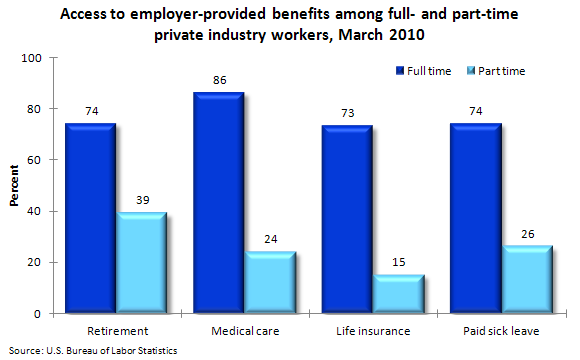Chart: Access to employer-provided benefits among U.S. workers
Tags: talent management, business management
Employer-provided retirement plans were available to 74 percent of all full-time workers in private industry in March 2010; by contrast, 39 percent of part-time private industry workers had access to a retirement plan.
Among full-time workers in private industry, 86 percent were provided access to medical care benefits and 74 percent were provided paid sick leave benefits. Only 24 percent of part-time private industry workers had access to medical care benefits, and 26 percent had access to paid sick leave benefits.
Access to life insurance was provided to 74 percent of full-time private industry workers, compared with just 15 percent of part-time workers who were offered this benefit.
This data is from the National Compensation Survey, which provides comprehensive measures of occupation earnings, compensation cost trends, and incidence and provisions of employee benefit plans in the United States. A worker with access to a medical or retirement plan is defined as having an employer-provided plan available for use, regardless of whether the worker chooses to enroll or participate in the plan. To learn more, see "Employee Benefits in the United States — March 2010" (HTML) (PDF), news release USDL-10-1044.
